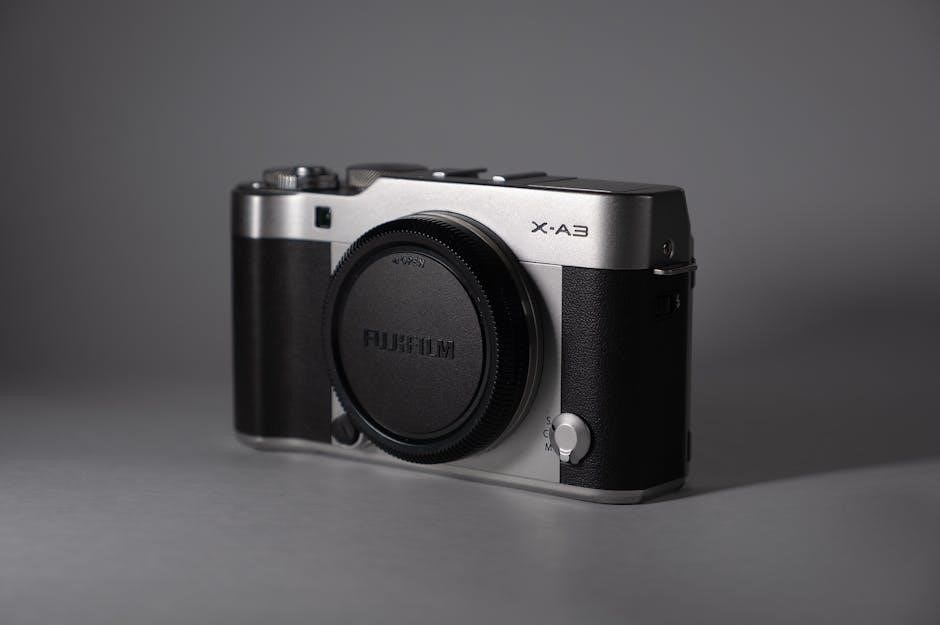The Boss TU-3 manual is an essential guide for understanding and utilizing the full potential of this chromatic tuner. It provides detailed instructions for setup, operation, and troubleshooting, ensuring users can optimize their tuning experience. The manual covers basic functions, advanced features, and maintenance tips, making it a must-have resource for musicians seeking precise tuning and reliability.
1.1 Overview of the Boss TU-3 Chromatic Tuner
The Boss TU-3 is a versatile and reliable chromatic tuner pedal designed for precise tuning. It features a robust stompbox design, making it ideal for gigging musicians. Equipped with a 21-segment LED meter, it offers accurate tuning with a clear visual display. The high-brightness mode enhances visibility in outdoor settings, while its compatibility with 7-string guitars and basses broadens its appeal. With options for battery or AC power, the TU-3 is a practical and durable tool for achieving professional-grade tuning accuracy.
1.2 Importance of the Manual for Optimal Usage
The Boss TU-3 manual is crucial for maximizing the tuner’s capabilities. It provides clear instructions for connecting instruments, navigating the LED display, and accessing advanced features like high-brightness mode. The manual also includes troubleshooting tips and maintenance advice, ensuring longevity and optimal performance. By following the guide, users can avoid setup errors and fully leverage the TU-3’s precision tuning, making it an indispensable resource for both beginners and experienced musicians seeking to master their sound.

Key Features of the Boss TU-3
The Boss TU-3 offers chromatic tuning, a 21-segment LED meter, high-brightness mode, and a durable stompbox design. These features ensure precise tuning, visibility, and reliability for musicians.
2.1 Chromatic Tuning Capabilities
The Boss TU-3 excels in chromatic tuning, offering precise pitch detection across a wide range. It supports 6-string guitars, basses, and 7-string instruments, ensuring versatility for musicians. The tuner features a 21-segment LED meter for accurate visual feedback, with a high-brightness mode for clear visibility outdoors. Its chromatic capability allows for tuning any note, while guitar/bass modes provide faster, instrument-specific tuning. The TU-3’s wide tuning range and high accuracy make it ideal for professional and amateur players alike, delivering reliable results in diverse musical settings.
2.2 High-Brightness Mode for Outdoor Use
The Boss TU-3’s High-Brightness Mode enhances visibility in direct sunlight, making it perfect for outdoor performances. This feature boosts the LED meter’s intensity, ensuring clear tuning feedback even under harsh glare. Musicians can focus on their instruments without struggling to see the display, maintaining seamless tuning during live shows or rehearsals. This mode is easily activated via a dedicated switch, providing a reliable solution for any lighting condition, indoors or outdoors.
2.3 21-Segment LED Meter for Precise Tuning
The Boss TU-3 features a 21-segment LED meter, offering exceptional precision for tuning. This advanced display provides a smooth, detailed visualization of pitch accuracy, with each segment representing a finer adjustment. The meter’s responsiveness and clarity ensure quick, accurate tuning, even in performance settings; Its high resolution allows musicians to achieve perfect pitch alignment effortlessly. This feature is particularly valuable for professionals seeking reliable, precise tuning capabilities in both studio and live environments.
2.4 Compact and Durable Stompbox Design
The Boss TU-3 boasts a compact and robust stompbox design, ideal for pedalboards and gigging musicians. Its durable construction ensures long-lasting reliability, with a weight of 390 grams and dimensions of 73mm (W) x 129mm (D) x 59mm (H). The tuner is built to withstand heavy use, making it a dependable choice for both studio and live performances. Its space-saving design allows for easy integration into any setup, while the sturdy build guarantees consistent performance over time.

Specifications and Technical Details
The Boss TU-3 measures 73mm (W) x 129mm (D) x 59mm (H) and weighs 390 grams. It supports battery or AC adapter power and features standard input/output connections for seamless integration into any setup.
3.1 Dimensions and Weight
The Boss TU-3 is designed to be compact and lightweight, making it ideal for musicians on the go. Its dimensions are 73mm (width) x 129mm (depth) x 59mm (height), and it weighs approximately 390 grams. This sturdy yet portable design ensures it fits seamlessly into any pedalboard setup without taking up excessive space. The unit’s compact size and durable construction make it a practical choice for both studio and live performance environments, while its lightweight nature minimizes strain during transportation. These physical specifications contribute to its reliability and ease of use for guitarists and bassists alike.
3.2 Power Options (Battery and AC Adapter)
The Boss TU-3 offers flexible power options to suit various performance needs. It can be powered using a 9V battery (type 6F22) or an AC adapter from the PSA series. The battery provides reliable operation, with a long lifespan, and the tuner features a low-battery indicator to alert users when replacement is needed. For consistent power, the AC adapter is a convenient alternative, ensuring uninterrupted use during gigs or practice sessions. This dual-power capability makes the TU-3 adaptable to both portable and stationary setups, catering to the diverse requirements of musicians.
3.3 Input and Output Connections
The Boss TU-3 features a standard INPUT jack for connecting your guitar or bass and an OUTPUT jack for sending the signal to your amplifier or other effects pedals. The INPUT jack also serves as the power switch, activating the tuner when a cable is plugged in. Additionally, the TU-3 includes a parallel DC OUT jack, allowing you to power other pedals using a PCS-20A cable. These connections ensure seamless integration into your setup, maintaining high signal integrity and providing reliable performance during live performances or studio sessions.

Understanding the Boss TU-3 Manual
The Boss TU-3 manual is a comprehensive guide detailing setup, operation, and troubleshooting. It provides clear instructions for both beginners and advanced users, ensuring optimal tuner performance and customization.
4.1 User Manual Structure and Content
The Boss TU-3 user manual is structured to guide users through setup, operation, and troubleshooting. It begins with safety precautions and basic tuner functions, followed by detailed explanations of advanced features like High-Brightness mode and memory retention. The manual also includes diagrams, troubleshooting tips, and maintenance advice to ensure optimal performance. Additional sections cover compatibility with 7-string guitars and basses, as well as factory reset procedures. The content is designed to be accessible for both beginners and experienced musicians, providing a comprehensive resource for mastering the TU-3 tuner.
4.2 Service Manual Details and Applications
The service manual for the Boss TU-3 provides detailed technical information for servicing and maintaining the tuner. It includes specifications, cautionary notes, and a comprehensive parts list for repairs. The manual outlines procedures for factory resets, data backup, and advanced troubleshooting. Additionally, it offers insights into the tuner’s internal components and circuitry, making it an essential resource for technicians and professionals. The service manual ensures that users can restore the TU-3 to its optimal state, maintaining its precision and reliability for years of use.
4.3 Importance of Pre-Service Notes
The pre-service notes in the Boss TU-3 manual are crucial for ensuring safe and effective maintenance. They outline essential precautions, such as disconnecting power sources and noting user settings before servicing. These guidelines help prevent accidental damage to the tuner or injury to the technician. By following these notes, users can maintain the TU-3’s precision and reliability, ensuring optimal performance for years to come. Ignoring these steps may lead to improper calibration or loss of factory settings, emphasizing their importance for successful servicing.

How to Use the Boss TU-3 Tuner
Connect your guitar to the INPUT jack to power on the tuner. Press the pedal to activate tuning mode, then adjust your instrument using the LED meter display.
5.1 Connecting the Guitar or Bass
To connect your guitar or bass to the Boss TU-3, plug your instrument cable into the INPUT jack located on the tuner. This connection powers on the device automatically. Ensure the cable is securely inserted to avoid any signal loss or interference. For bass players, the tuner supports 6-string bass guitars and is compatible with 7-string guitars as well. Once connected, the LED meter will light up, indicating the tuner is ready for use. Proper connection ensures accurate tuning and reliable performance during practice or live performances.
5.2 Basic Tuning Operations
Press the pedal switch to activate the tuner. Play a string on your guitar or bass and observe the 21-segment LED meter. The needle will indicate pitch deviation, while the LEDs show the target note. Adjust your instrument until the needle aligns with the center, ensuring accurate tuning. Use the high-brightness mode for better visibility outdoors. The TU-3 supports chromatic tuning, making it versatile for guitars and basses. Follow the LED guidance to fine-tune your instrument efficiently, achieving precise intonation every time.
5.3 Navigating the LED Meter Display
The LED meter display on the Boss TU-3 is designed for clear and intuitive tuning. The 21-segment LED meter shows pitch deviation, with the needle indicating how high or low the note is. The target note is displayed above the meter, and additional LEDs light up to guide you toward the correct pitch. Use the high-brightness mode for better visibility in bright environments. The display is easy to read, allowing for quick and precise tuning adjustments. This feature ensures accurate tuning, even in challenging lighting conditions, making it ideal for both stage and studio use.

Advanced Features of the Boss TU-3
The Boss TU-3 offers advanced features like high-brightness mode for outdoor use, compatibility with 7-string guitars and bass, and memory retention of settings for convenience and customization.
6.1 High-Brightness Mode Activation
The Boss TU-3’s High-Brightness Mode enhances visibility in outdoor or brightly lit environments. To activate it, press and hold the pedal switch while powering on. This mode boosts the LED meter’s brightness, ensuring clear note detection even under direct sunlight. The 21-segment LED display remains crisp and readable, while the high-brightness setting minimizes eye strain during performances. This feature is particularly useful for musicians who frequently play live gigs or practice outdoors, providing reliable tuning accuracy in any setting.
6.2 Memory Retention of Settings
The Boss TU-3 tuner automatically retains your preferred settings, such as tuning mode and brightness level, even after power is turned off. This memory retention feature ensures that your custom configurations remain saved, eliminating the need to reset them each time you use the tuner. Whether you’re switching between standard tuning and alternate modes or adjusting the LED brightness for different environments, the TU-3 remembers your preferences, providing a seamless and efficient tuning experience every time you power on the device.
6.3 Compatibility with 7-String Guitars and Bass
The Boss TU-3 tuner is fully compatible with 7-string guitars and 6-string basses, offering accurate and reliable tuning for extended-range instruments. Its chromatic tuning capabilities ensure precise pitch detection across the entire fretboard, making it an ideal choice for modern musicians who use these instruments. The TU-3’s versatility accommodates various tuning needs, from standard to drop tunings, ensuring optimal performance for both guitarists and bassists who require a wide range of tonal possibilities.

Troubleshooting and Maintenance
The Boss TU-3 manual provides solutions for common issues like inaccurate tuning or LED malfunctions. Regular cleaning and checking connections ensure optimal performance. Resetting to factory settings can resolve persistent problems, maintaining the tuner’s reliability and accuracy for long-term use.
7.1 Common Issues and Solutions
The Boss TU-3 manual addresses common issues such as inaccurate tuning or LED display malfunctions. Solutions include checking instrument connections, ensuring proper power supply, and resetting the tuner to factory settings. If the LED flickers, cleaning the input/output jacks or replacing the battery may resolve the issue. For persistent problems, users can restore default settings or consult the troubleshooting guide for detailed repair procedures. Regular maintenance, like cleaning the pedal and verifying connections, ensures reliable performance and accurate tuning.
7.2 Resetting to Factory Settings
To reset the Boss TU-3 to its factory settings, press and hold the pedal switch while powering on the unit. This process restores default tuning settings, display brightness, and calibration. The LED meter will flash briefly to confirm the reset. Note that any custom settings will be lost, so users should reconfigure preferences afterward. This feature is useful for troubleshooting or when returning the tuner to its original state. Always refer to the manual for detailed instructions to ensure proper execution of the factory reset procedure.
7.3 Cleaning and Care Tips
Regular cleaning and proper care ensure the Boss TU-3 performs optimally. Use a soft, dry cloth to wipe the exterior, avoiding harsh chemicals or abrasive cleaners. For stubborn marks, dampen the cloth lightly with water or a mild detergent. Avoid touching the LCD or LED components to prevent smudges. Store the tuner in a protective case or pouch to shield it from dust and scratches. Handle the pedal gently to avoid damaging the internal mechanisms. Refer to the manual for detailed maintenance instructions to preserve the unit’s functionality and appearance over time.

Downloading and Accessing the Manual
The Boss TU-3 manual is available for download from official Boss support resources. Users can access PDF versions or view instructions online for free, ensuring easy reference.
8.1 Official Boss Support Resources

The official Boss website offers comprehensive support for the TU-3, including downloadable PDF manuals, user guides, and instructional materials. Users can access these resources directly through the Boss global support page, ensuring authenticity and reliability. The website also features knowledge bases, FAQs, and service center information for troubleshooting and maintenance. Additionally, Boss provides links to authorized retailers and service centers, making it easy to find genuine support for the TU-3 tuner. These resources are designed to help users maximize their tuner’s performance and resolve any issues efficiently.
8.2 PDF Downloads and Online Viewing Options
The Boss TU-3 manual is readily available for download as a PDF from the official Boss website and trusted platforms like Manualzz. Users can access the manual online without downloading, making it convenient for quick reference. The PDF format ensures compatibility across devices, allowing musicians to view the guide on smartphones, tablets, or computers. Online viewing options eliminate the need for physical storage, providing instant access to tuning instructions, troubleshooting tips, and advanced features. This flexibility ensures that users can easily navigate and utilize the manual whenever needed.
8.3 Additional Documentation and Guides
Beyond the standard manual, Boss offers supplementary resources for the TU-3, including service manuals and quick-start guides. These documents provide in-depth technical details, troubleshooting solutions, and advanced setup options. Additional materials, such as instructional videos and FAQ sections, are available on the Boss website and third-party platforms. These resources cater to both beginners and experienced users, ensuring comprehensive understanding and optimal use of the TU-3 tuner. They are easily accessible online, offering users a wealth of knowledge to enhance their tuning experience.

Comparing the Boss TU-3 to Other Models
The Boss TU-3 stands out as an evolution of the TU-2, offering enhanced features like a 21-segment LED meter and High-Brightness mode. Compared to the TU-3S, it retains core functionality but in a slightly larger design, making it a versatile choice for musicians seeking precise tuning and durability.
9.1 Evolution from the TU-2 to TU-3
The Boss TU-3 represents a significant upgrade from its predecessor, the TU-2, introducing enhanced features for improved tuning accuracy and user convenience. The TU-3 boasts a 21-segment LED meter, providing a smoother and more precise tuning experience. Additionally, it includes a High-Brightness mode, ideal for outdoor performances under intense lighting conditions. The design remains compact and durable, maintaining the reliability that made the TU-2 a favorite among musicians. These advancements solidify the TU-3 as a top choice for professionals and hobbyists alike, ensuring accurate and efficient tuning across various environments.
9.2 Differences Between TU-3 and TU-3S
The TU-3S is a compact version of the TU-3, retaining all its core features but in a smaller design. Both models share the 21-segment LED meter and High-Brightness mode, ensuring precise tuning in any setting. The TU-3S, however, offers a more streamlined footprint, making it ideal for pedalboards with limited space. While the TU-3 is slightly larger, both tuners deliver the same exceptional performance, including support for 7-string guitars and 6-string basses. The choice between the two ultimately depends on the user’s preference for size versus the classic TU-3 design.
The Boss TU-3 manual provides comprehensive guidance for mastering this versatile tuner. Its detailed instructions ensure precise tuning, durability, and ease of use, satisfying musicians’ needs across various applications.
10.1 Summary of Key Points
The Boss TU-3 manual is a comprehensive guide for musicians, detailing features like chromatic tuning, high-brightness mode, and a 21-segment LED meter. It explains setup, operation, and maintenance, ensuring optimal performance. The tuner supports 7-string guitars and bass, with durable stompbox design and versatile power options. Advanced features like memory retention enhance user experience. Troubleshooting and factory reset options are covered, along with care tips. The manual is indispensable for mastering the TU-3, making it a top choice for precise tuning and reliability in any musical setting.
10.2 Final Tips for Mastering the Boss TU-3
Mastering the Boss TU-3 involves exploring its advanced features and maintaining it properly. Regularly calibrate the tuner for accuracy and use the high-brightness mode for outdoor gigs. Experiment with different tuning modes to suit your playing style. Keep the LED meter clean and avoid exposure to extreme temperatures. Finally, reset the tuner to factory settings if you encounter any issues. By following these tips and staying updated with the latest manual instructions, you’ll ensure optimal performance and extend the life of your TU-3, making it an indispensable tool for precise tuning.


